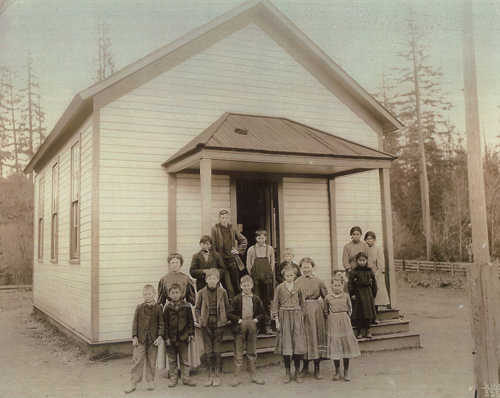
Inglewood was located on the eastern shore of Lake Sammamish. It was an almost-town which instead became a community between the 1890s and the 1930s. Its legacy lives on in what is today the northern part of the city of Sammamish. Kroll Atlas maps from the early twentieth century show that the plat formed a square starting on the eastern shore of Lake Sammamish and running east along NE 16th Street (just north of Inglewood Hill Road) to 212th Avenue NE, then south across Inglewood Hill Road to NE Eighth Street, west back to the lake, and then north again.
Only three weeks after the town was platted, the Inglewood Post Office was established on August 21, 1889. John Ayer was the first postmaster. Between 1890 and 1894 both Charles Gunther and his wife Theresia ran the post office.
A 1901 Polk's business directory lists the Inglewood community with a population of 25. But the community's growth accelerated rapidly during the first decade of the twentieth century, aided by the establishment of the Lake Sammamish Shingle Company by Joseph Weber in September 1901 and the addition of a second single mill several years later. There was an Inglewood Grammar School and Service Station.
The 1910 Census for the Inglewood precinct paints a considerably different picture of the local population than what exists there a century later. In April 1910, 185 non-Indians were recorded in the Inglewood precinct, living mostly on or near the eastern shore of Lake Sammamish. More than 30 percent of these inhabitants reported they had been born in countries other than the United States; two-thirds of those came from the Scandinavian countries of Sweden, Norway, and Finland. Few non-Indians were actually "from" Inglewood. In fact, only 20 percent of these inhabitants reported that they had even been born in Washington state, and of these 36 people, all but five of them were under the age of 21.